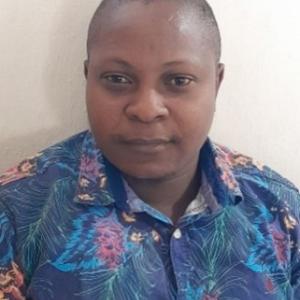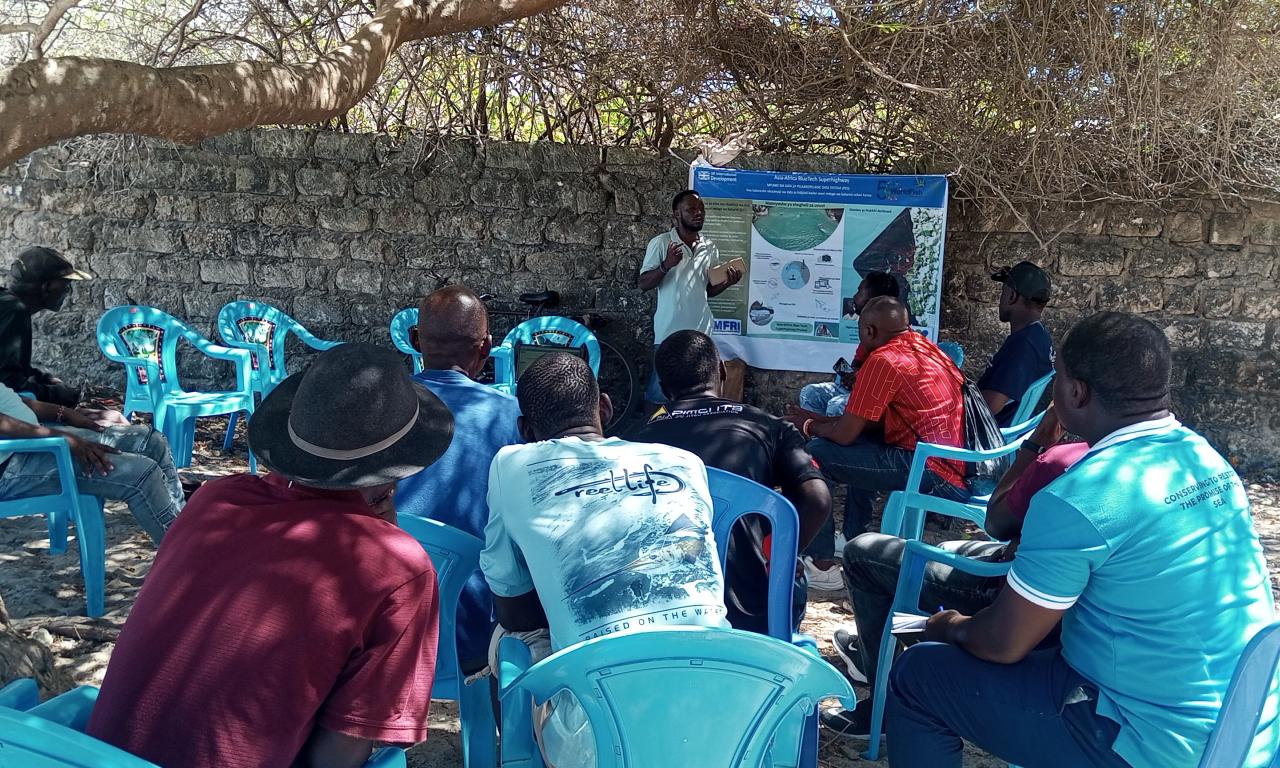
A series of recently conducted sensitization meetings by WorldFish reached out to 270 boat owners and members of beach management units across five coastal counties in Kenya. The initiative is part of a broader effort to create a future in which communities can benefit from data for coastal conservation and sustainable management of small-scale fisheries in Kenya.
Beginning in March 2025, the Kenya WorldFish team, comprising Dr. Emmanuel Mbaru, Fisheries Technology Scientist, and Japhet Tembo, Research Analyst for Digital Fisheries, ran a series of sensitization meetings across five coastal counties of Kenya. The objective was to improve the monitoring of vessels and catches of small-scale fisheries (SSFs) along the Kenyan Coast. This initiative is an activity of the Asia-Africa BlueTech Superhighway (AABS), with a focus on digital information systems for small-scale fisheries.
“The meetings are part of the broader effort to enhance data-driven decision-making and sustainable fisheries management by implementing pelagic data systems (PDS) devices on SSF fishing vessels,” said Japhet.
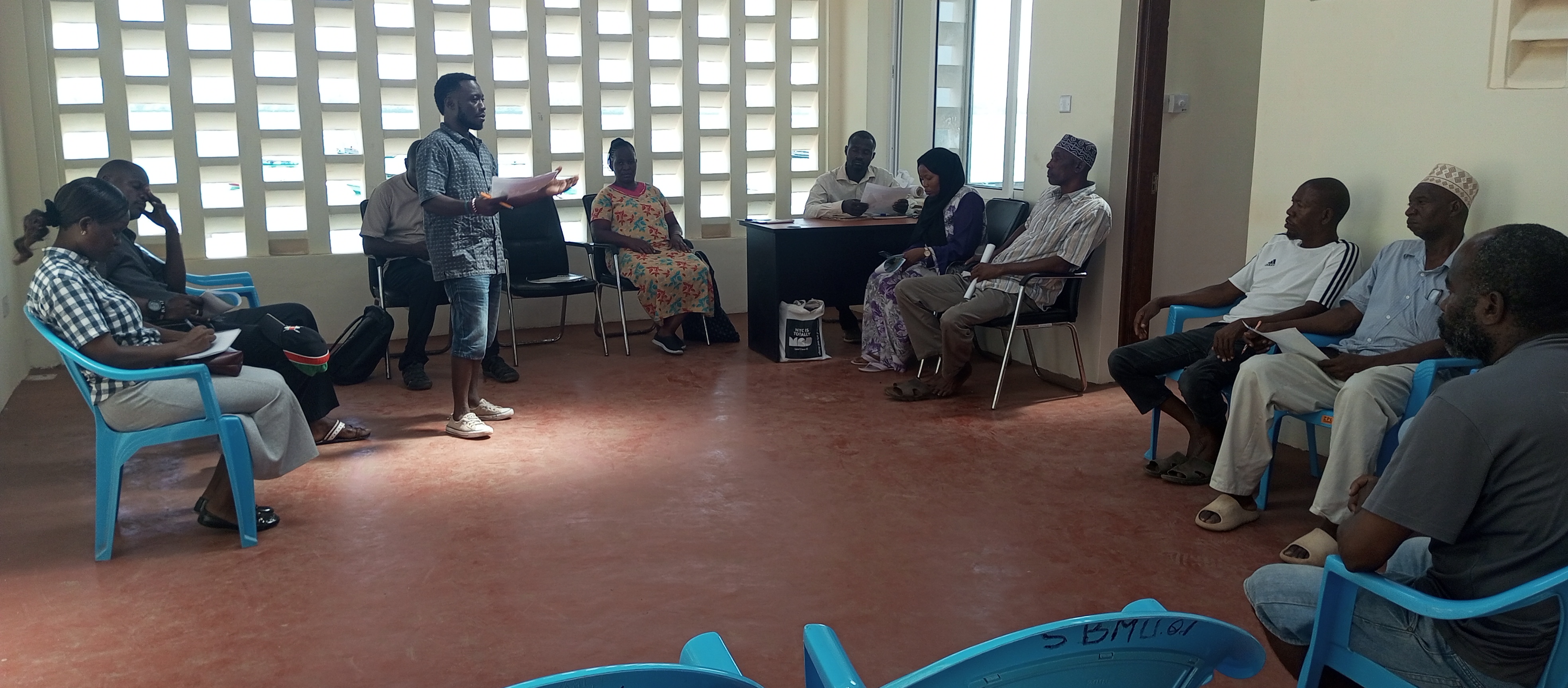
Involving Local Partners and Communities
The sensitization meetings aimed to raise the awareness of local stakeholders about the installation of vessel monitoring devices in their community. The efforts align with and complement ongoing government initiatives, spearheaded by the Kenya Fisheries Service (KeFS) under the Kenya Marine Fisheries and Socio-Economic Development (KEMSFED) project, which is piloting the installation of vessel monitoring systems using automatic identification systems (AIS).
The sensitization meetings have been successfully conducted in Kwale, Mombasa, and Kilifi counties. They were convened through consultation with inclusive governance institutions, specifically beach management units (BMUs), co-management areas (CMAs), and the newly established joint co-management areas (JCMAs). The meetings were designed to enhance the collaborative management of marine resources among local resource users, prioritizing government partnerships and BMU stakeholders to strengthen local governance.
BMUs and CMAs are designated areas where the government, local communities (represented by BMUs), and other stakeholders collaborate to manage fisheries and marine resources sustainably. JCMAs bring together neighboring BMUs that share common fishing grounds and develop a joint co-management plan (JCMAP) to ensure sustainable fisheries practices.
Currently, 270 boat owners and BMU members in 16 BMU sites across 10 JCMAs along Kenya’s coastline have been sensitized, including Shimoni-Vanga, Mwandamu-Funzi, and Chale-Gazi in Kwale County; Kamamkuki JCMA, which covers BMUs in both Mombasa and Kilifi Counties; Tamkibo and Malindi-Magarini in Kilifi County; Tana Delta JCMA in Tana River County; and Faza-Siyu-Mbwajumwali, Pate-Shanga, and Lamu Bay in Lamu County. Across these areas, 92 boat owners have been selected to have PDS devices installed on their vessels.
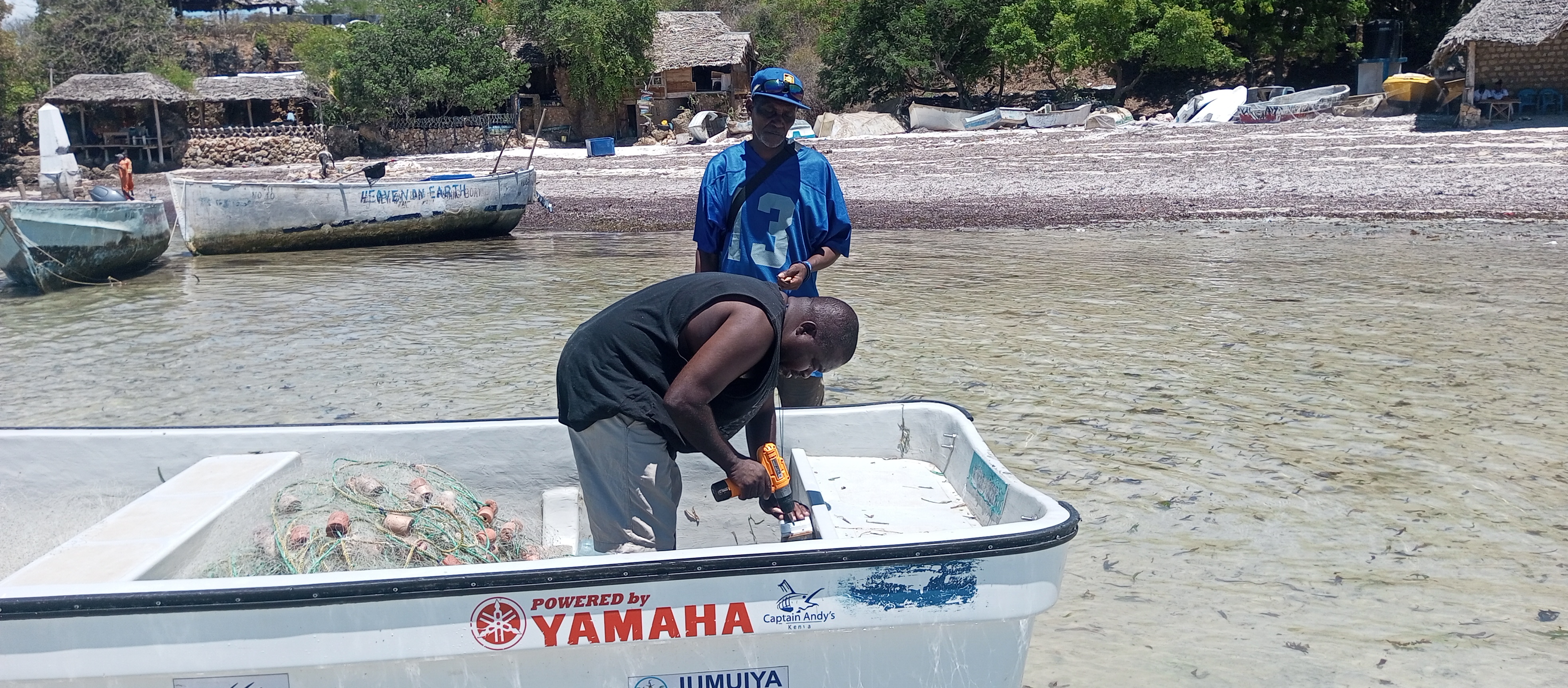
Collective Engagement, Shared Vision, and Early Successes
In April, a three-day high-level familiarization and sensitization workshop brought together directors of fisheries from all five coastal counties, officials from the KeFS Monitoring, Control, and Surveillance (MCS) department, the KeFS data directorate, representatives from KMFRI, and the BMU network.
“The collective engagement highlighted the shared vision for using technology to support sustainable fisheries and enhance the resilience of coastal livelihoods,” said Dr. Mbaru.
Three BMUs - Mtwapa and Kuruwitu in Kilifi County and Gazi in Kwale County - have emerged as trailblazers and model fish landing sites in adopting technology and innovation.
“These sites were selected for early installation based on their enthusiasm, curiosity to explore how technology can transform their data collection processes and systems, and strong leadership structures noticed during the sensitization forums,” said Tembo.
Kuruwitu BMU particularly stood out for its youthful leadership and proactive approach. It comprises six landing sites and 326 active members, approximately 30% of whom are youth in leadership roles. A total of seven PDS units have been installed across its three landing sites - Kijangwani, Bureni, and Vipingo -located within the renowned Kuruwitu Marine Sanctuary, which hosts a 30-hectare locally managed marine area (one of the first marine protected areas managed by local communities along the Kenyan coast). Mtwapa and Gazi BMUs have also shown great promise, with five and three units installed, respectively.
These pilot installations are already yielding promising insights into high-resolution mapping of fishing activity, revealing patterns that can be critical for future investments and resource planning. Currently, over 500 trips have been recorded from the 15 vessels installed with PDS units. An additional 75 PDS units have been installed in the other sites of Kwale, Mombasa, and Kilifi counties along the JCMAs by the end of April 2025.
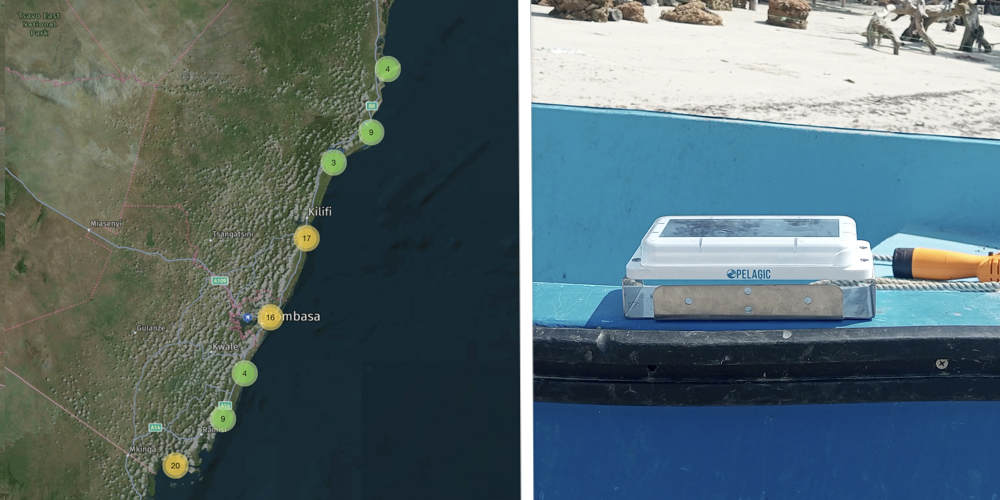
The vessel and catch monitoring program aims to track fishing activity and empower communities with real-time data that can drive better decision-making and resource management. The information will guide future investments in cold chain infrastructure, market linkages, and sustainable fishing practices, thus improving livelihoods while conserving marine ecosystems.
Fishers involved in the program have committed to ensuring the proper handling and protection of the PDS devices, reporting any damages, creating greater awareness among fellow crew members about the use and need for PDS trackers on SSF vessels, and sharing knowledge to encourage broader adoption.
“Their active participation and commitment are key to building a robust, community-driven digital fisheries management system in Kenya, creating a future where communities can use and benefit from data for coastal conservation and sustainable management of small-scale fisheries in Kenya,” noted Charles Nyale, Chair of the BMU network.

